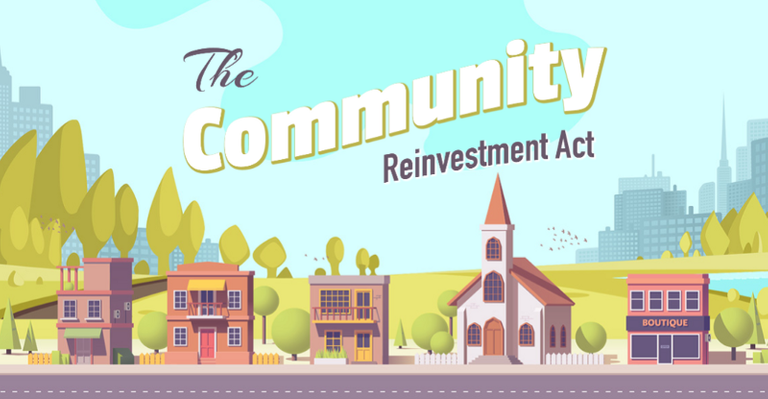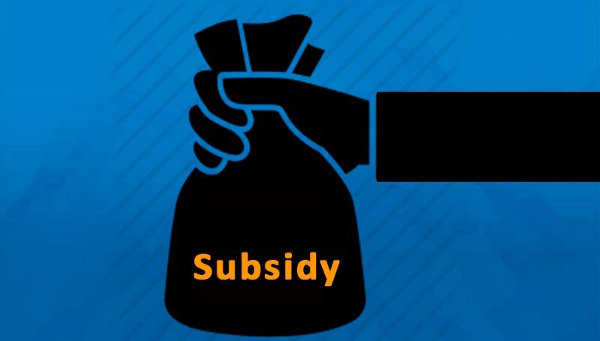Refining The Community Reinvestment Act — Stuart
Ownerless liquidity is the ultimate arbitrator in a world of infinite potential. It is a natural law in its own right. It is not a consequence of the lack of regulation. Ownerless liquidity can provide a strong foundation for a new, fair economy but it will not come about without the right set of policies.
 https://www.federalreserve.gov/consumerscommunities/cra_about.htm
https://www.federalreserve.gov/consumerscommunities/cra_about.htm
The Community Reinvestment Act
To kick off this discussion let us have a look at a rather old law. It is a law that was enacted in 1977 to ensure that banks are serving the needs of their communities. It requires banks to make credit available, including credit for affordable housing and community development, in order to meet the credit needs of the communities they serve. It is a very simple law, but it did have a very important effect. A detailed study showed that the law resulted in an increase of lending to low- and moderate-income neighborhoods by $8–12 billion, on average, every year between 1994–2004 (Jaffee and Quigley, 2011).
The creation of the law had two main motivations. The first was the belief that it would be bad for the economy if banks concentrated lending in wealthier areas, at the expense of poorer areas. The second was the belief that it would be bad for the economy if banks were to use their power to prevent competition from other banks in the same area. This would result in a continuation of the status quo, with no increase in lending to underserved communities.
Both of these motivations are based on the assumption that it is not in the interest of banks to lend to poorer communities. The second motivation assumes that the banks will use their power over their customers to avoid competition, which will lead to a continuation of the status quo. The law was created to force the banks into lending to poorer communities, by using the only tool the government had at its disposal — the carrot of more business and the stick of a fine for not lending.
The effect of the law was a significant increase in lending. The effect was so significant that it is hard to believe that it was not intentional. The law was created to increase lending to poorer communities, and it did.
The law is still in force today. It is now called the Home Mortgage Disclosure Act and it has a web page on the website of the Federal Financial Institutions Examining Council. The act requires banks to report detailed information on the mortgages they originate, including the race and ethnicity of the borrower and the location of the property.
The Community Reinvestment Act Is Not Enough
The Community Reinvestment Act is a good law. The intention behind it is positive. It was created to ensure that banks serve their communities. However, we need something more than the Community Reinvestment Act if we want to build an economy that serves all its citizens.
The main reason for this is that the effect of the Community Reinvestment Act is limited to the banking sector. The banks benefit from the law, but they do not bear the full costs. The costs are borne by the borrowers, who pay higher interest rates than they would otherwise have to if they were able to get loans from other sources, such as the non-bank lending sector or homeowners’ equity (getting a loan from an asset).
The obvious solution to this problem is to make the banks pay the full cost of all the lending they do. This can be achieved by levying a tax on the banks’ assets, such as on their cash reserves or on the value of the mortgages they have outstanding. The effect of such a tax will be to deter the banks from lending to poorer communities, unless the tax is offset by a subsidy.
The subsidy can be achieved by a number of means. One way would be to provide direct subsidies to the borrowers to offset the higher interest rates they pay. A more direct way would be to reduce the tax on interest income. This is not as good from the point of view of the government, because it does not reduce the tax base. However, it would be better for the economy because it would lower the cost of capital for entrepreneurs and would lower the cost of funding for entrepreneurs, which would encourage more entrepreneurs to start businesses.
The effect of the subsidy would be to reduce the cost of borrowing to borrowers who are considered creditworthy. If we were to apply the subsidy to all borrowers, it would have no effect on the cost of borrowing to borrowers who are considered creditworthy because the cost of borrowing would be the same whether they borrow from a bank or from non-bank sources.

The subsidy could be applied to all borrowers who are considered creditworthy but this would be a very large cost. Alternatively, it could be applied only to borrowers who are considered creditworthy and who have a household income below a given level, such as below the poverty line.
This would have a big effect on the cost of borrowing for the borrowers who are considered creditworthy because the subsidized borrowers would have to compete with the borrowers who are considered creditworthy but who do not get a subsidy. This would result in the interest rate paid by the latter group of borrowers being lower than the interest rate they would otherwise have to pay.
The effect of this subsidy would be to reduce the cost of funding for non-bank enterprises. This would result in an increase in the number of entrepreneurs who are able to access financing and start up new businesses. The effect of this would be to increase lending and investment. It would also increase competition between the banks and non-bank enterprises, and this would increase the efficiency of the economy.
The subsidy would have to be large to achieve this effect. Therefore, if it is introduced, it will have to be introduced gradually. It could start with a small subsidy, such as a $200 subsidy per year for borrowers with incomes below the poverty line. The subsidy could then be increased gradually until it is sufficient to have a noticeable effect.
Ownerless liquidity is being tested within the cryptocurrency landscape and it should be interesting to see the frictionless value that ownerless liquidity will bring.
Thanks for reading!
As always,
Follow me for my crypto / DeFi content to expedite your knowledge!
Advertise with me 👉 DeFiknowledge.com

Great content, Stuart!
Keep up the good work! I'll follow you on Twitter
Posted Using LeoFinance Beta